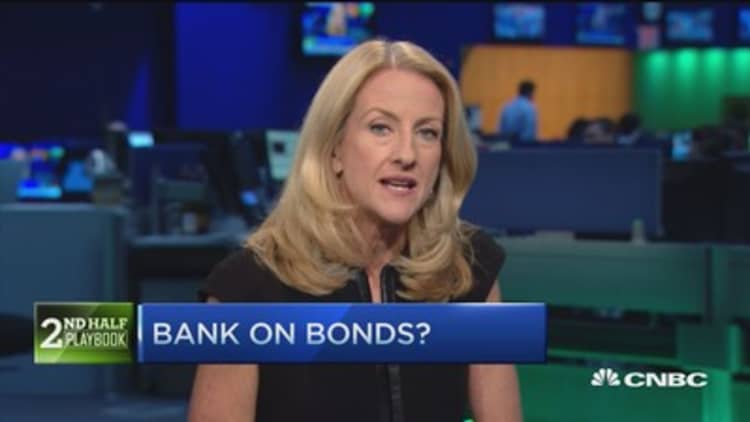
It has been nine years since the Federal Reserve last raised interest rates, a streak many investors expect to end in the second half of 2015.
Right now, the expectation is that the Fed will begin a series of measured rate increases in September. Another smaller group of fixed-income pros expects the rate hikes to start in December. Some outliers, including bond guru Jeffrey Gundlach of DoubleLine Capital, believe the Fed will not move at all this year.
What almost everyone agrees on is that the market will experience some volatility when rates rise, but not the level seen during the "taper tantrum" of 2013.
The anticipated rate hike by the Fed has been well telegraphed and is not expected to catch the markets off guard the way former Fed Chairman Ben Bernanke did in 2013. Two years ago, the then-Fed chief suggested the central bank might dial back on its bond purchase program, comments that surprised investors and sent bond yields soaring.
"Everything depends on the Fed," said Jim Caron, a managing director and fixed-income portfolio manager at Morgan Stanley. (Tweet this)
Given the Fed is depending on data to make its decision, Caron is keeping a close eye on gross domestic product and some key inflation numbers. He expects the Fed to move if economic growth ramps up to 3 percent in the second half of the year, if wage inflation picks up, and the Fed's favorite inflation metric, the Personal Consumption Expenditures price index, increases to 1.5 percent from the current reading of 1.2 percent.
When the Fed does raise interest rates, Pimco strategist Tony Crescenzi expects "short to intermediate term" bonds of out to five years will see the most weakness, something he said could hurt a lot of investors given so many are positioned there.
Jeff Rosenberg, chief fixed income strategist at BlackRock, said that how the economy performs is as important as what the Fed does.
He points out the second half of the year is seasonally stronger than the first half, and the U.S. could get an additional kicker as consumers finally feel comfortable enough to start spending the savings they have received from lower gas prices over the last six months.
If the economy starts moving faster than some had expected—at a time when the central bank has promised to take a "measured approach" to rate hikes—Rosenberg said the long end of the curve may start to steepen more sharply on inflation fears.
Rosenberg notes this is a contrary opinion, as many see the yield curve flattening at a higher level as short rates rise.
Expectations for inflation that may outpace the Fed's rate hikes could see the back end of the curve rise more than expected. He said that in this scenario, investors would be best served to overweight in the belly of the curve in the seven- to 10-year range, and underweight the short and long end of the curve.
The stronger economy and foreign investors seeking yield are expected to support one area of the bond market that is typically very vulnerable to a higher rate environment: high-yield corporate bonds.
Citi strategist Stephen Antczak noted this part of the bond market has been hurt on fear about higher interest rates, but pointed out many of the companies in this space have been prudent about terming out their debt to 2019 to 2020. This makes defaults less likely in the near term, especially if the economy strengthens.
Of more concern in the second half, he said, is the expected jump in supply from investment grade issuers. A lot of these companies are going to want to issue debt ahead of a rate hike, and that could create a supply glut the market might find hard to absorb this summer.
But there could be another issue that could plague the corporate and asset backed bond markets in the second half of the year: liquidity concerns. Issuance, especially in the corporate space, has been increasing as the big banks have been cutting their inventories. That means when some investors go to sell on a rate rise, there may not be a buyer on the other side.
"I think the second half will be bit more bumpy," said Dan Fuss, vice chairman of Loomis Sayles.
While Fuss believes the Fed has pretty much assured the markets of at least one rate hike this year, he is not so sure how quickly the next one will come. He believes the Fed is more focused than many believe on the "international developments" it has cited in its last two statements on monetary policy.
With geopolitical tensions high in many parts of the world and many economies still struggling, he said the U.S. central bank may be extra cautious with the pace at which it raises rates. Fuss said higher interest rates would give foreign investors looking for a safe haven for their investments added incentive to put money in the U.S.
He also believes the Fed will be sensitive to developing economies that do not want to see this money leave their shores.


